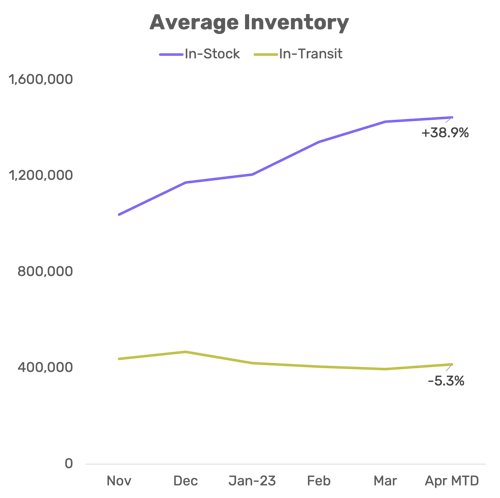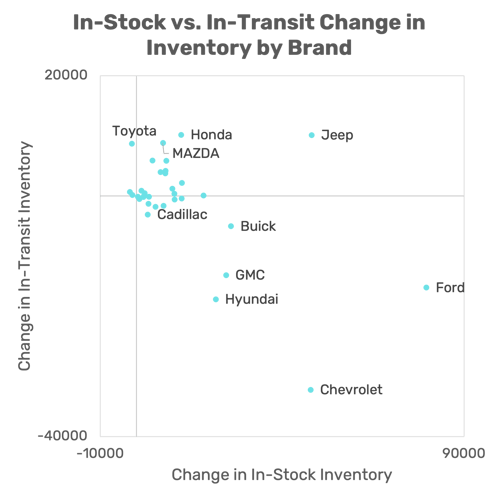A Closer Look at In-Stock and In-Transit New Car Inventory Trends Changes and Their Implications for the Automotive Industry
In 1997, in just its second year of operation, Amazon hit one million customer accounts and generated $148 million in revenue. Eight years later, Amazon hit a milestone of 50 million Prime members and 100 billion in revenue.
Amazon has irrevocably and simultaneously changed both the retail market and consumer expectations. Nearly any item can be delivered straight to a customer's doorstep with one click, often within the same day.
There are two components to the "Amazonification" of our world to consider, one which applies to the automotive industry and one which doesn't. Consumers value the convenience of ordering a book, meal, or product and having it arrive straight to their door today. But the "today" part and not the "door" part is what we can best apply to the automotive industry.
While buying a car and having it delivered to your house is possible, this is not the norm of how people purchase vehicles. COVID has disrupted the industry, to be sure (chip shortages, supply line disruptions, etc.) But even considering the effect COVID and its aftermath have had on the industry, most consumers still purchase a vehicle at a dealership.
When new car inventory was at its lowest point, buyers demonstrated that they would wait for an in-transit vehicle if that were the only option. But consumers are more inclined to buy a car if they can touch it, sit in it, or take it for a test drive. There is a need for consumers to experience the car before deciding to buy. This requirement is absent when consumers make small purchases online. But consumers are generally willing to forgo convenience when taking on a multi-year commitment if a car is available for them to purchase in person. This is true, of course, as long as that car is available on the lot for purchase today.
Cloud Theory had previously written about the advent and rise of in-transit vehicles as somewhat of a stopgap means to sell vehicles when there were very few to be had. And to be sure, in-transit vehicles are still filling the inventory gaps for many makes and models. But we’ve also seen a shift in recent weeks toward in-stock vehicles selling on dealer lots.
Inventories in general, have been growing, up more than one million from the lows of September 2021, when the industry hit an almost unfathomable 830,000 new vehicles in stock. But in the past six months alone, almost 400,000 vehicles were added to the new vehicle supply. And the complete entirety of that growth came from a rise in in-stock vehicles, while the number of vehicles in transit actually declined by 23,000.

The turn rate of these vehicles —the percentage of inventory that sells in a 30-day window—indicates the “today” inclination. Despite the rise of in-stock cars over the past six months, the turn rate has increased by 3.3 points to 73.1% in April compared to six months prior. Contrast that with the turn rate for in-transit vehicles (42.2%), and clearly consumers are more apt (and able) to buy a vehicle that is right in front of them.
It should be noted that not all automotive makes are recovering their in-stock inventory at the same rate. For example, all four General Motors brands, Ford and Hyundai, have grown its in stock inventories while the in-transit supply has diminished between November 2022 and April 2023. And all six of those makes have experienced gains in overall turn rate over that time period. In contrast, the Japanese manufacturers—Toyota, Honda, and Mazda—have continued to grow their in-transit inventories, with the former being one of the only makes to experience a decline of its in-stock supply.

In the spirit of the Amazonified “today” culture that we live in, OEMs with more vehicles on the ground will have an advantage over those without. This points to a short-term opportunity that should be supported with marketing and messaging, so consumers know there are vehicles for purchase right now. And for those OEMs still relying on in-transit vehicles to plug holes in their supply bucket, urging patience, communicating what’s coming (and why it’s worth waiting for), and perhaps sweetening the pot via incentives for those that are willing to wait is in order.
Seeking the Latest Report? Discover Our Newest Resource Below:





